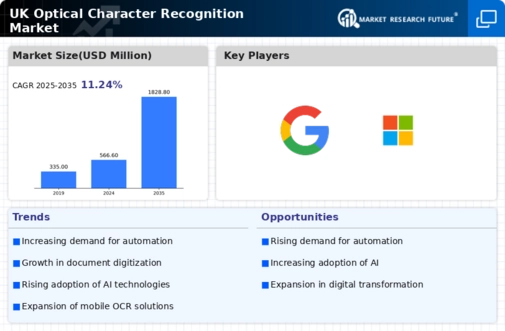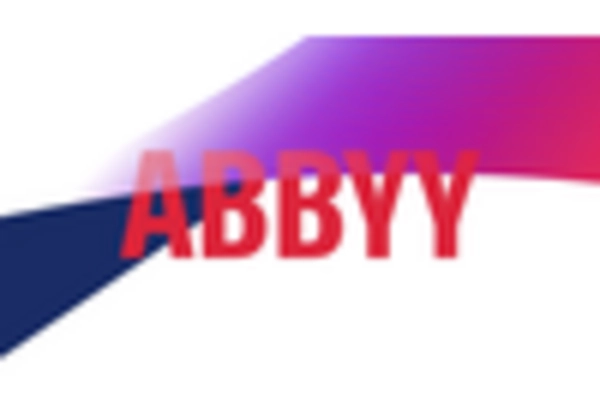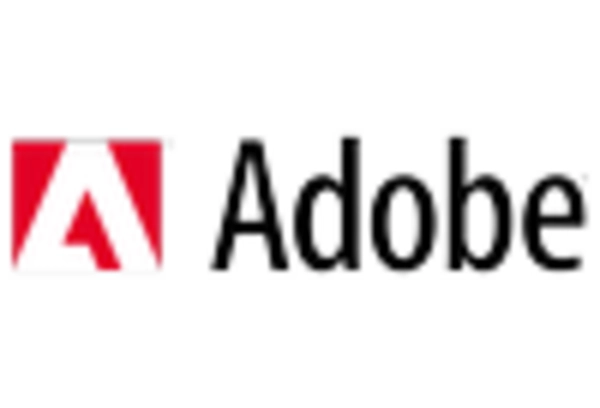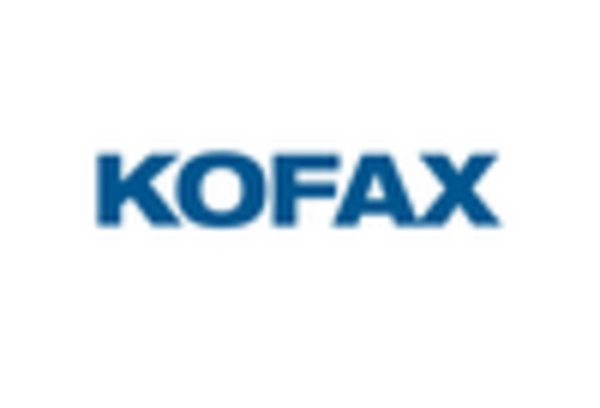Need for Enhanced Data Security
The optical character-recognition market is increasingly influenced by the growing need for enhanced data security measures in the UK. As organizations digitize their records, the importance of safeguarding sensitive information becomes paramount. OCR technology can facilitate secure data handling by enabling automated data extraction while minimizing human intervention. This capability is particularly relevant in sectors such as healthcare and finance, where data breaches can have severe consequences. The market is likely to see a rise in demand for OCR solutions that incorporate advanced security features, such as encryption and access controls, to protect sensitive information. This trend suggests that the optical character-recognition market will evolve to meet the stringent security requirements of various industries.
Advancements in Mobile Technology
The optical character-recognition market is benefiting from rapid advancements in mobile technology, particularly the proliferation of smartphones equipped with high-resolution cameras. These devices enable users to capture text from physical documents and convert it into digital formats seamlessly. As mobile applications incorporating OCR capabilities become more prevalent, the market is likely to see increased adoption among consumers and businesses alike. The convenience of mobile OCR solutions is particularly appealing in sectors such as education and field services, where on-the-go data capture is essential. This trend indicates a growing reliance on mobile technology, which could significantly enhance the optical character-recognition market's reach and application.
Increased Automation in Business Processes
is experiencing a surge in demand due to the increasing automation of business processes across various sectors in the UK. Companies are adopting OCR technology to streamline operations, reduce manual data entry, and enhance productivity. This shift is particularly evident in industries such as finance and logistics, where efficiency is paramount. According to recent data, the automation trend is expected to grow by approximately 25% over the next five years, driving the need for advanced OCR solutions. As businesses seek to optimize workflows, the optical character-recognition market is likely to benefit significantly from this trend, as organizations invest in technologies that facilitate faster and more accurate data processing.
Integration with Cloud Computing Solutions
The optical character-recognition market is experiencing a notable shift towards integration with cloud computing solutions. As businesses in the UK increasingly adopt cloud-based platforms for data storage and processing, the demand for OCR technology that seamlessly integrates with these systems is on the rise. Cloud-based OCR solutions offer scalability, flexibility, and cost-effectiveness, making them attractive to organizations of all sizes. This trend is particularly relevant for businesses looking to enhance collaboration and data accessibility across teams. The optical character-recognition market is likely to benefit from this integration, as companies seek to leverage cloud technology to improve their data management processes.
Rising E-commerce and Digital Transactions
The optical character-recognition market is poised for growth as the e-commerce sector in the UK continues to expand. With online shopping becoming increasingly prevalent, businesses are leveraging OCR technology to enhance customer experiences and streamline order processing. The ability to quickly and accurately capture data from invoices, receipts, and shipping labels is crucial for maintaining operational efficiency. Recent statistics indicate that e-commerce sales in the UK are projected to reach £200 billion by 2026, which could lead to a corresponding increase in demand for OCR solutions. This trend suggests that the optical character-recognition market will play a vital role in supporting the digital transformation of retail and logistics operations.

















Leave a Comment